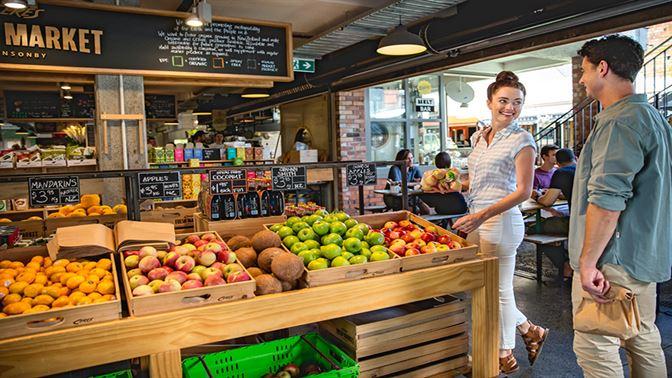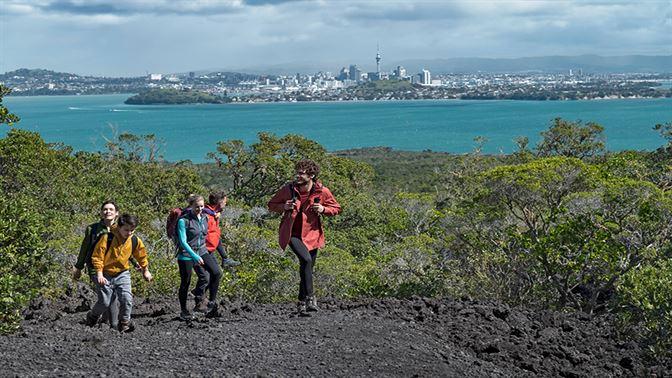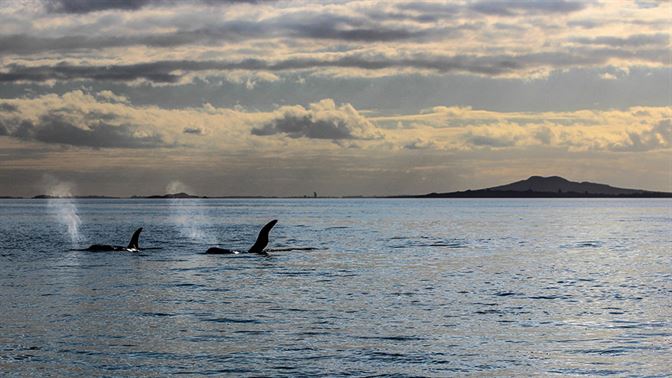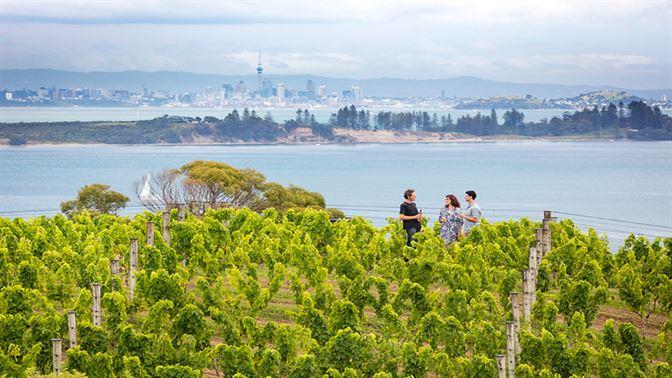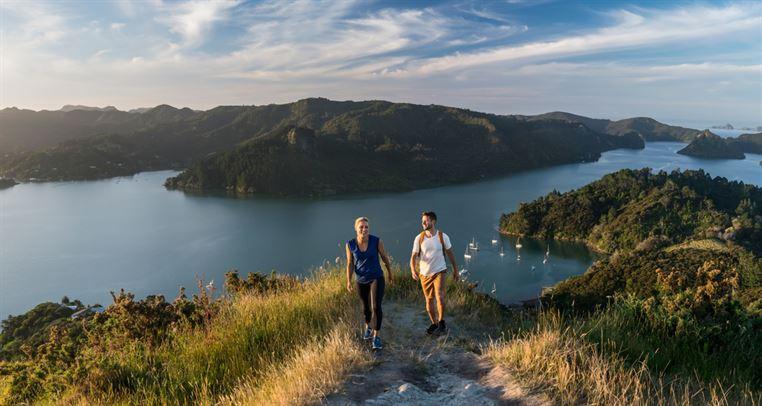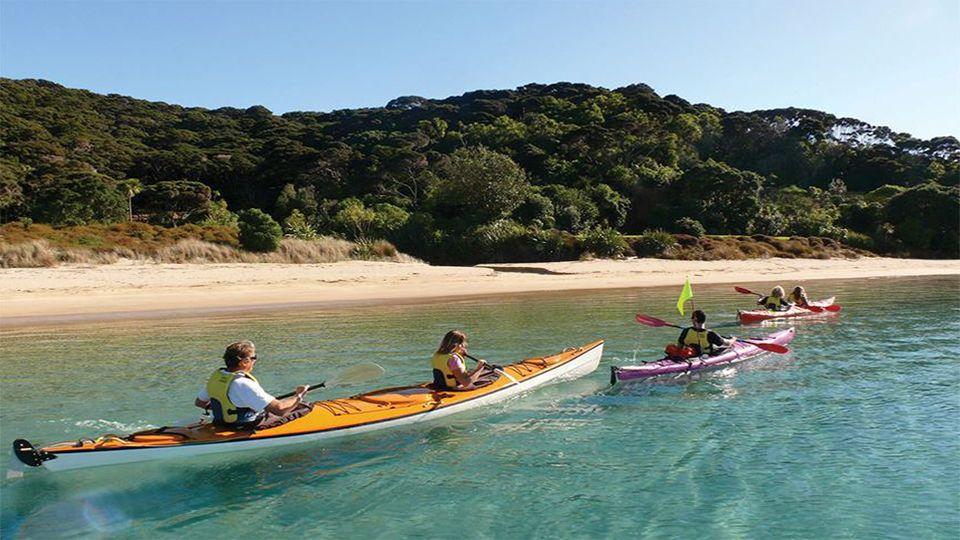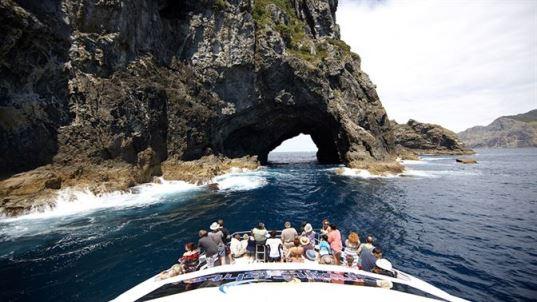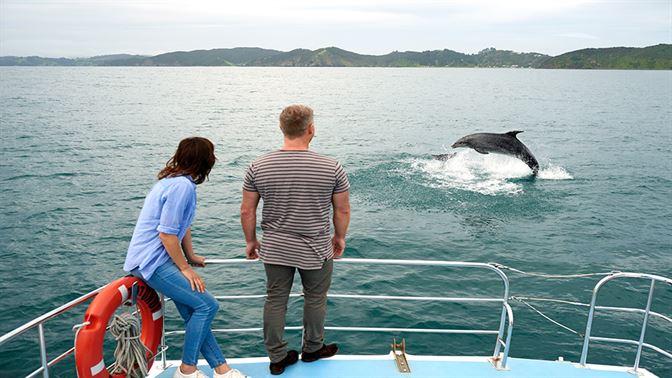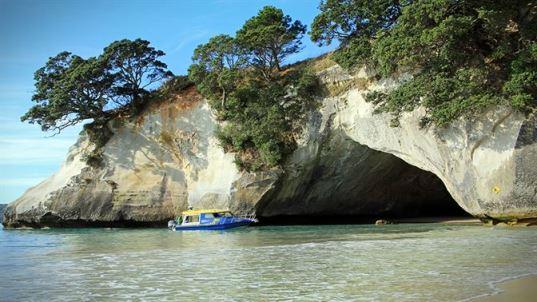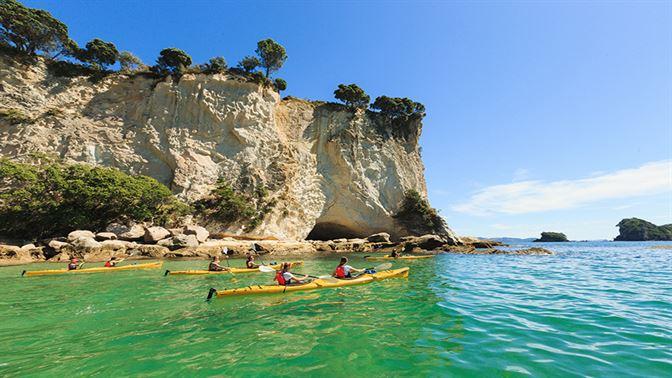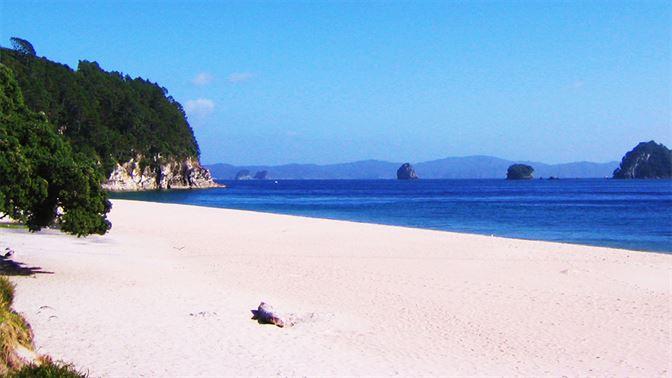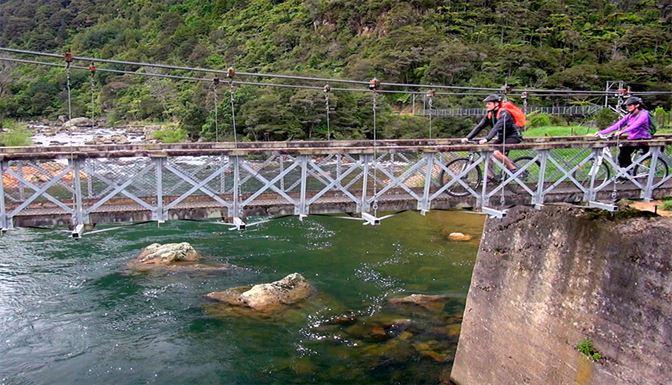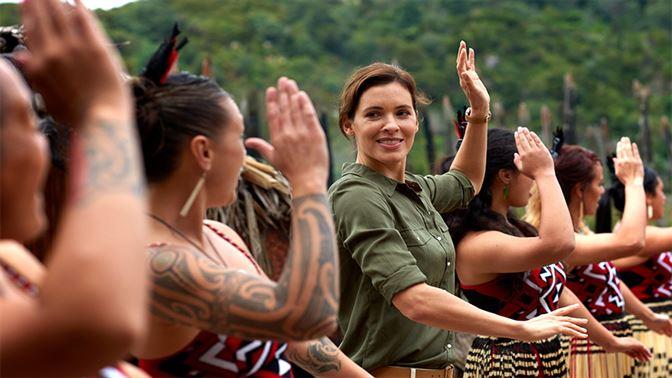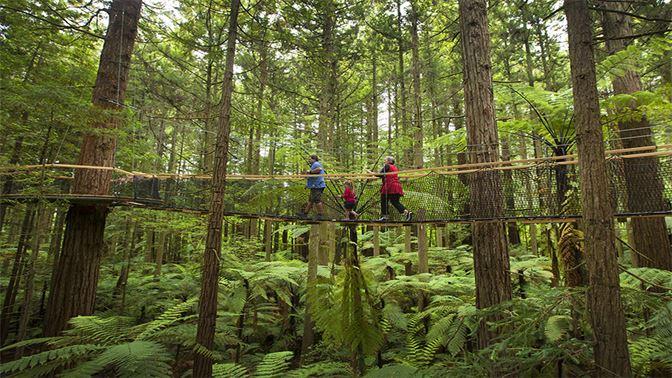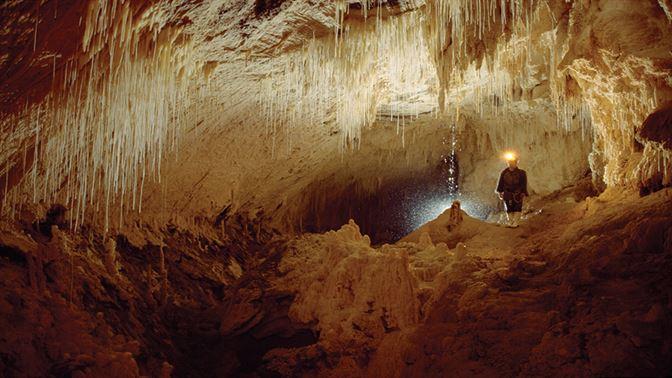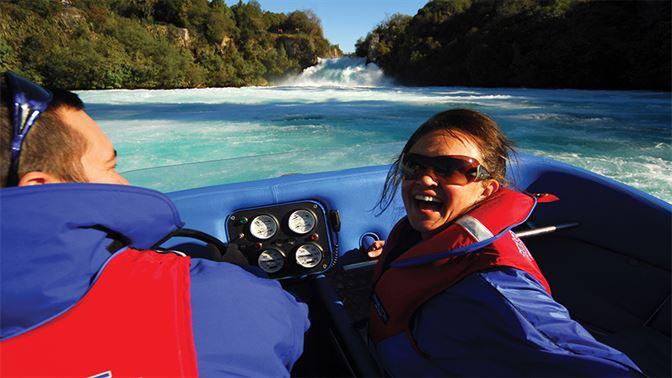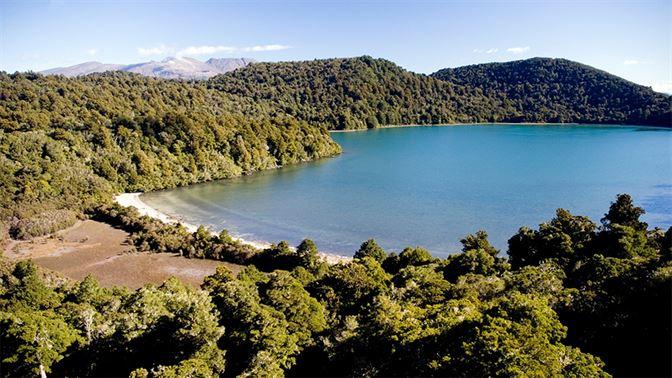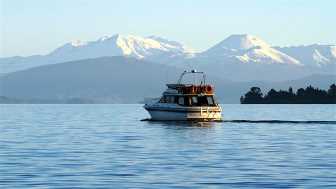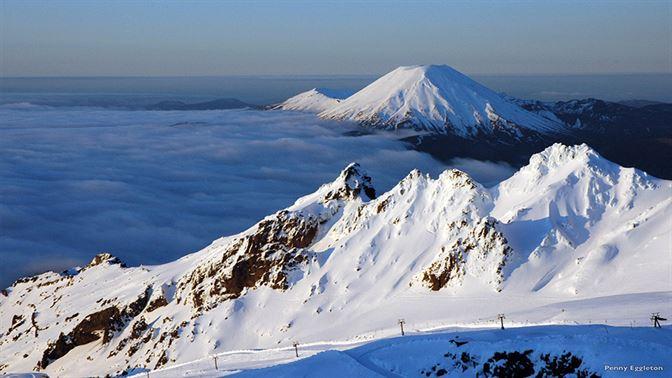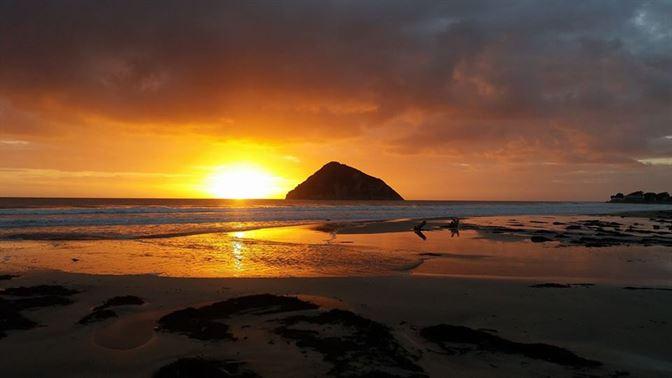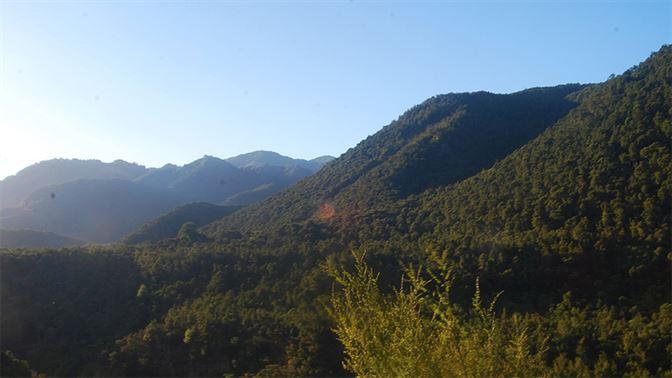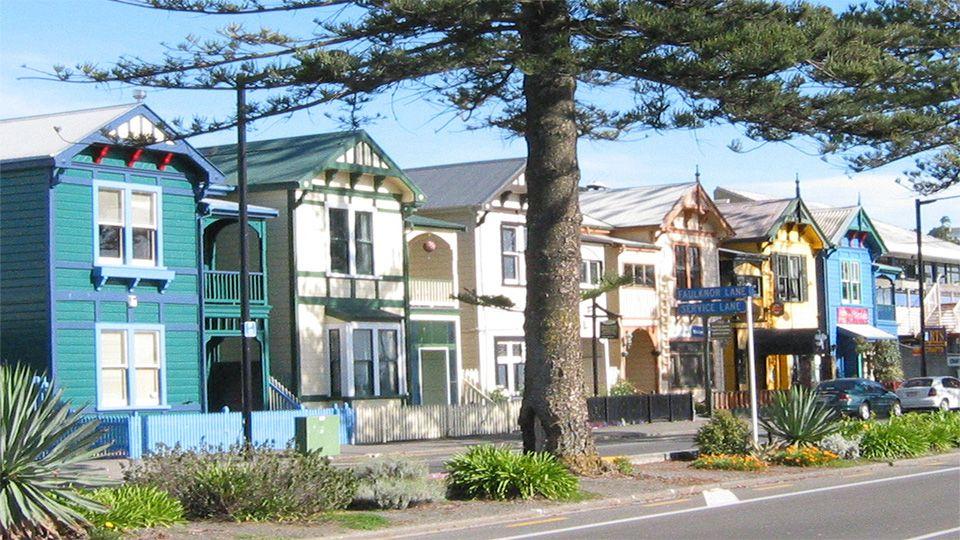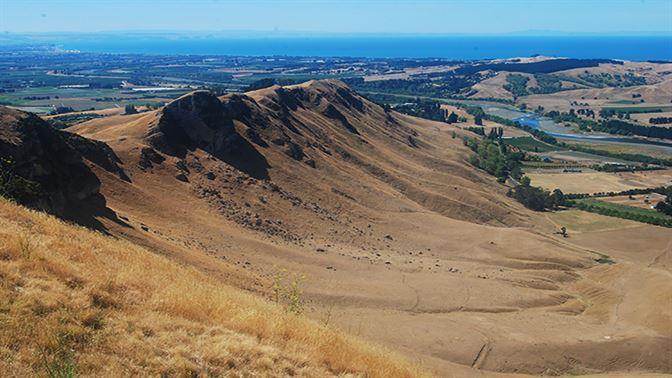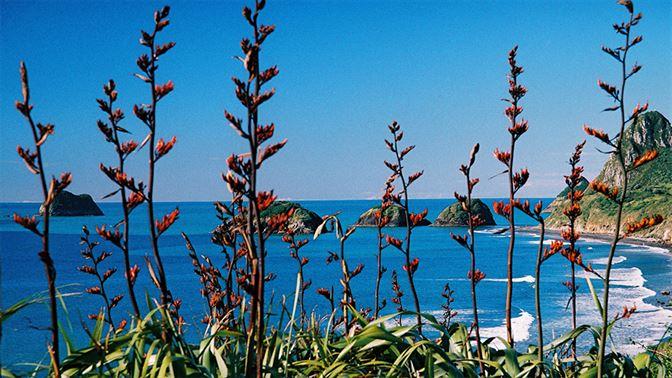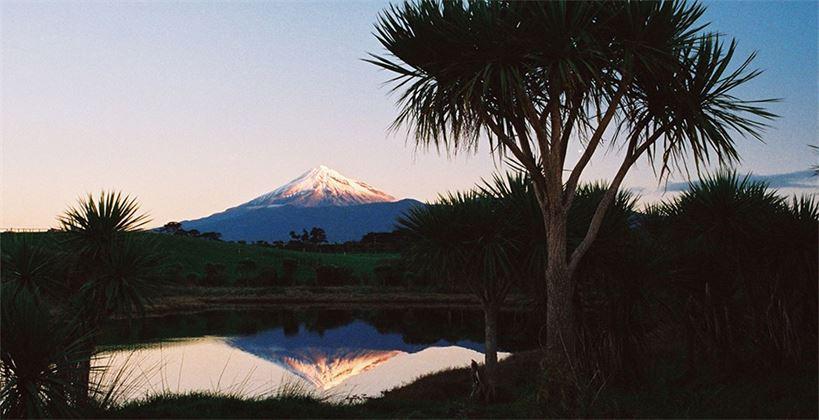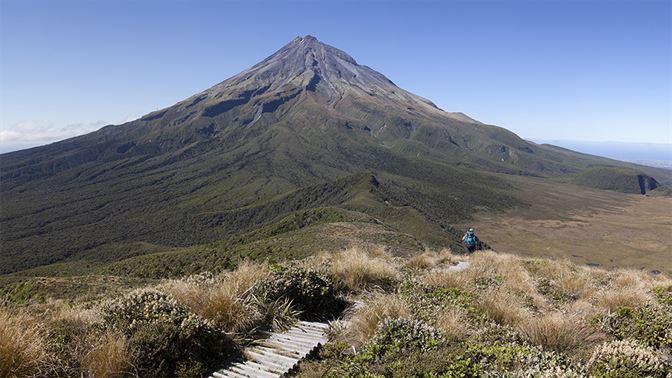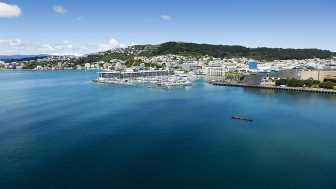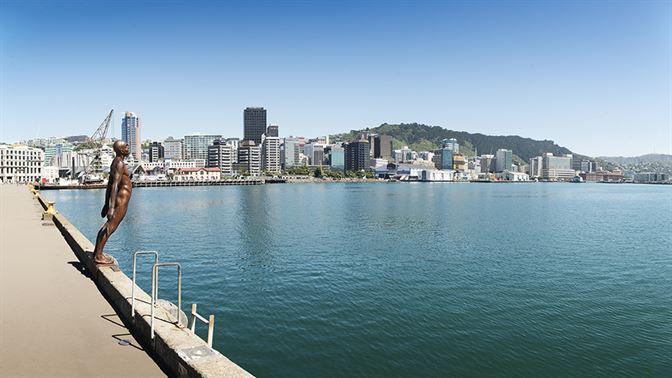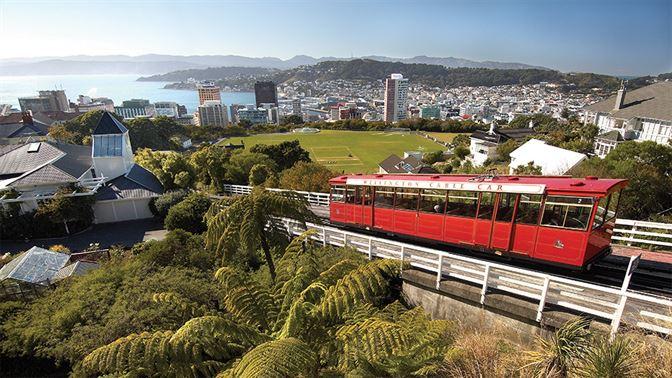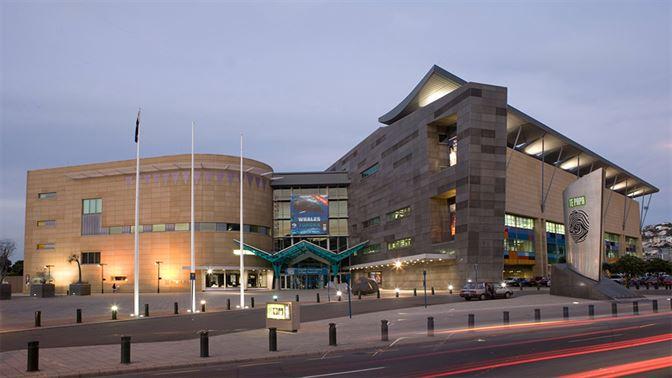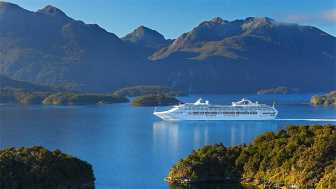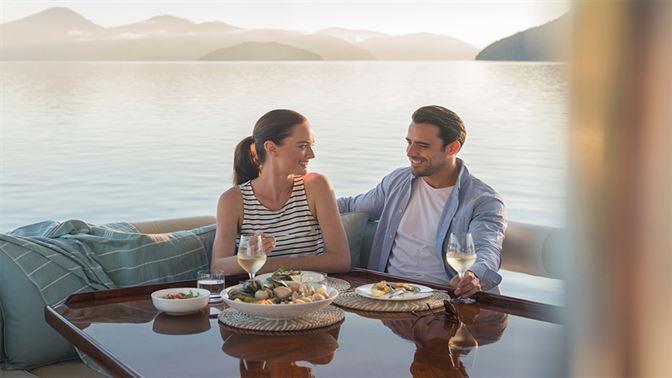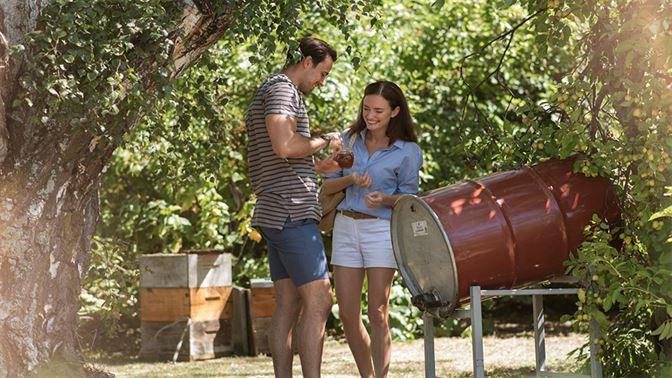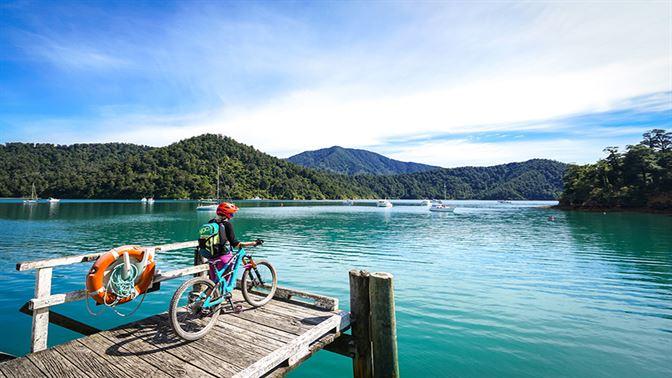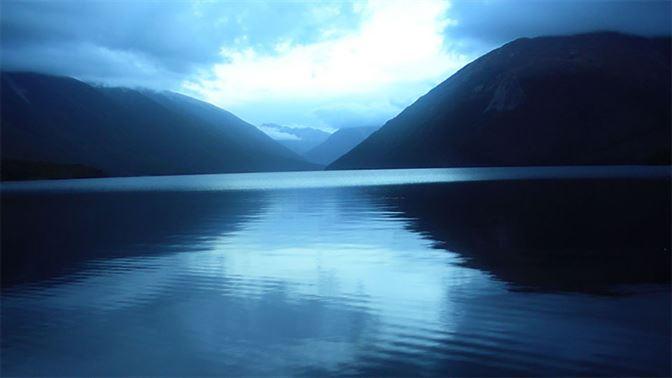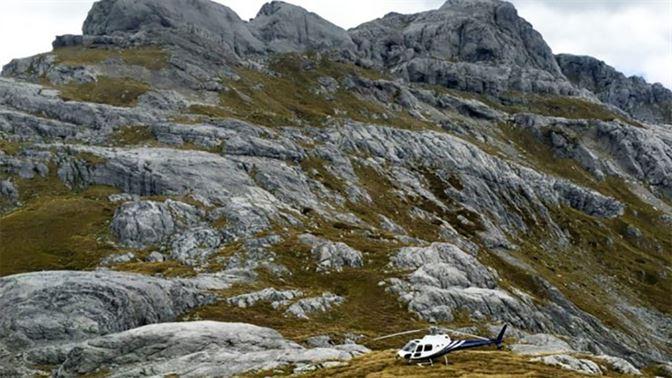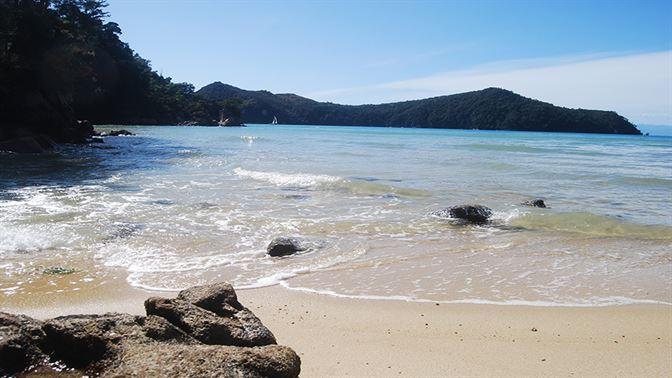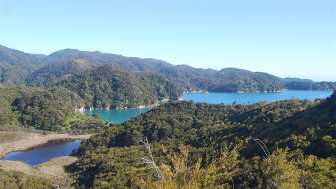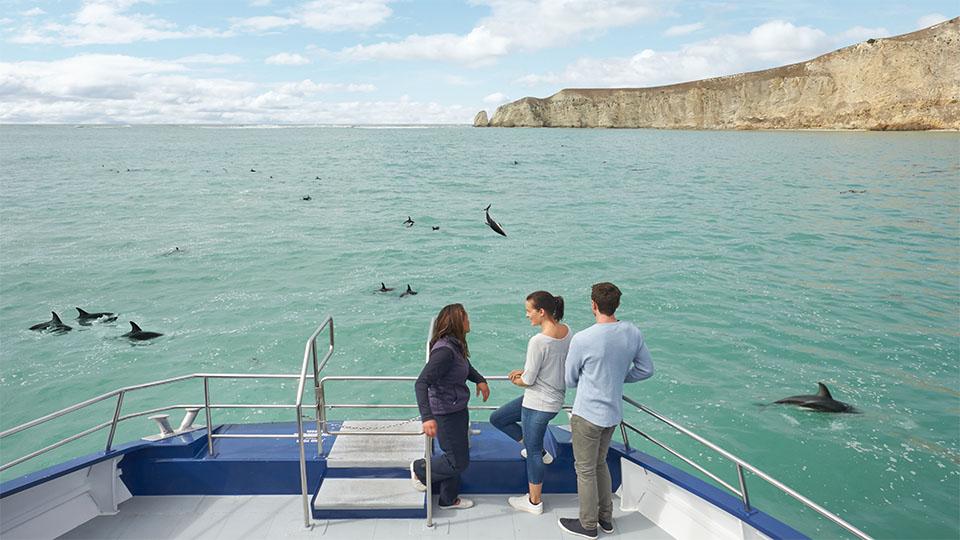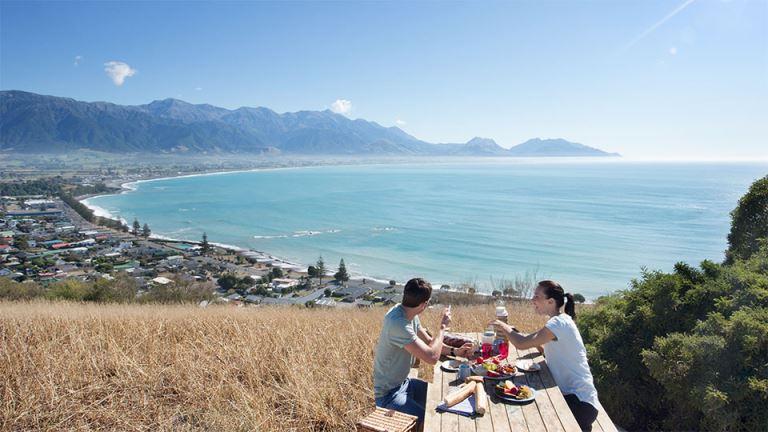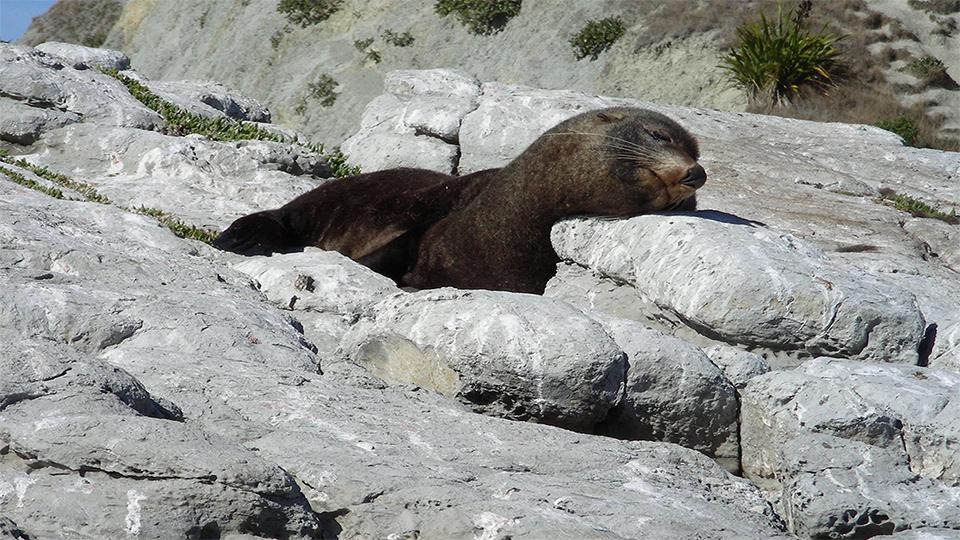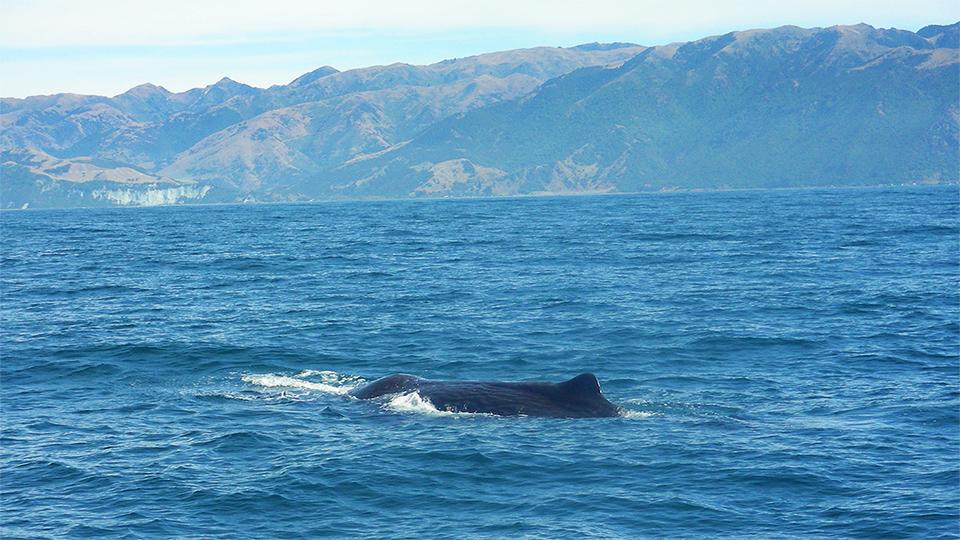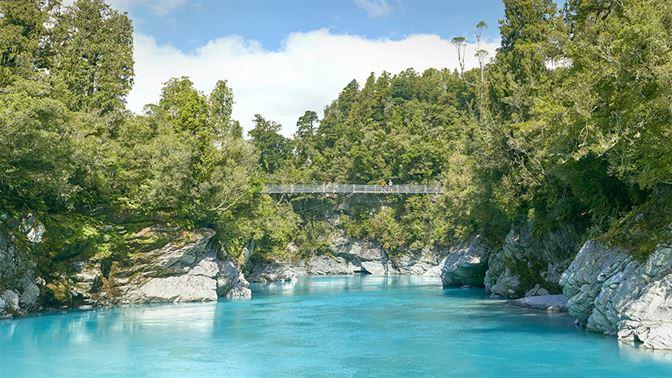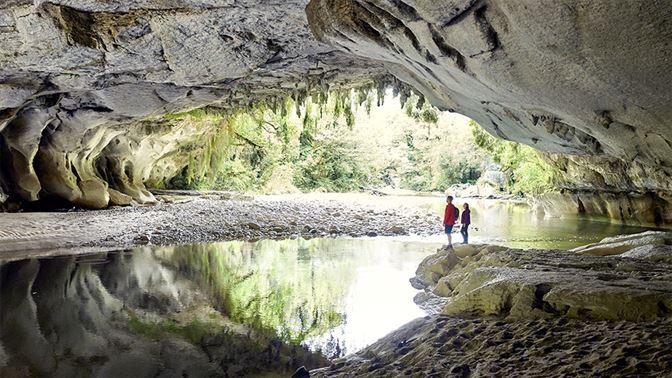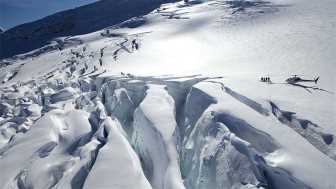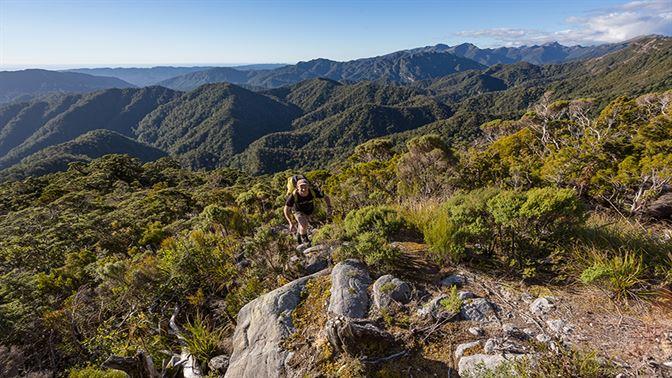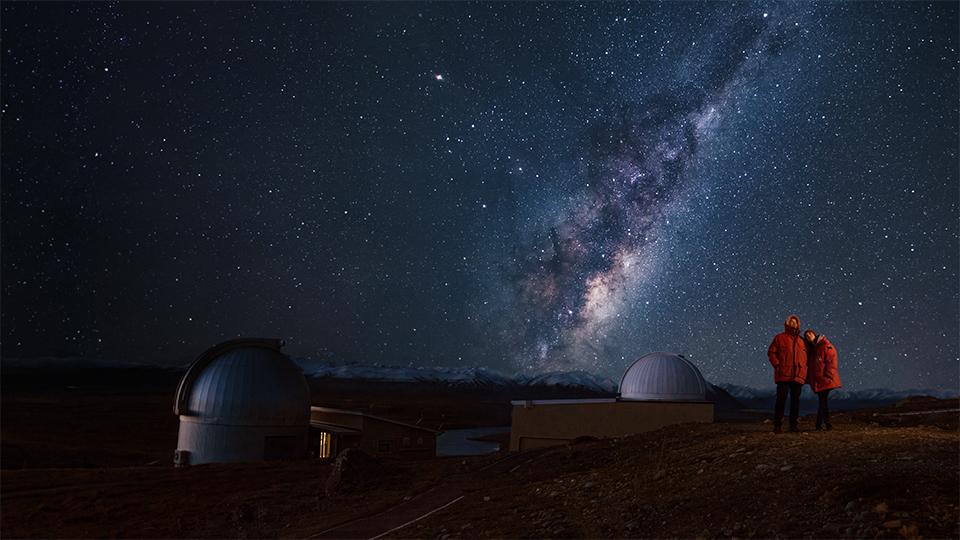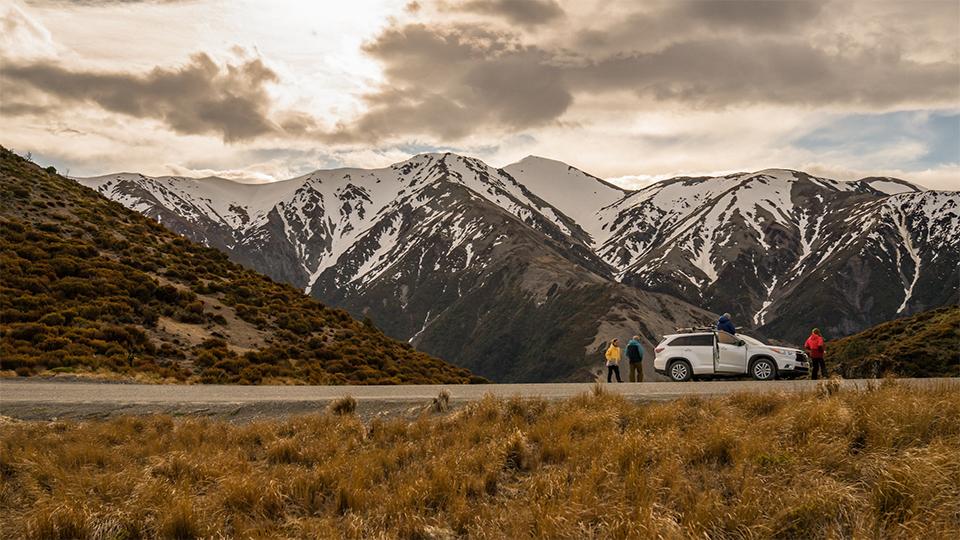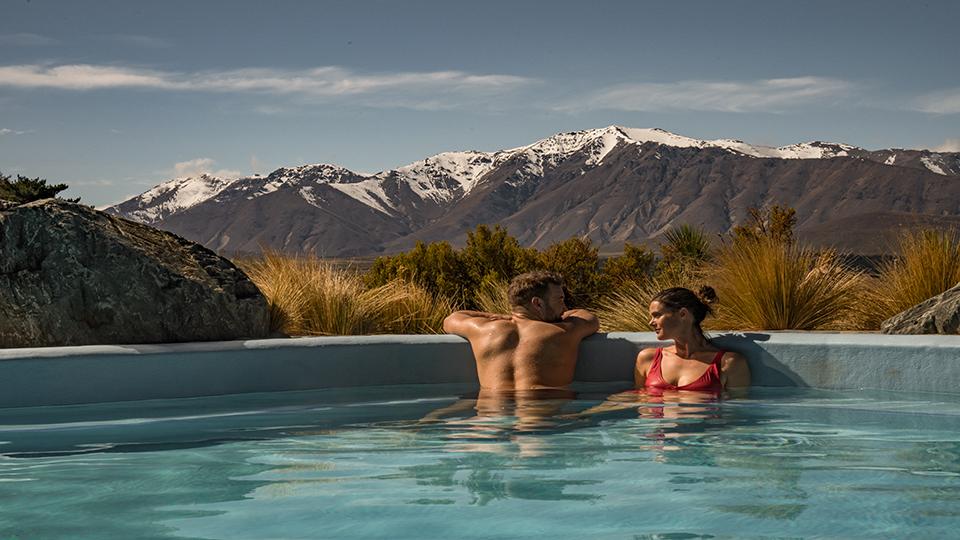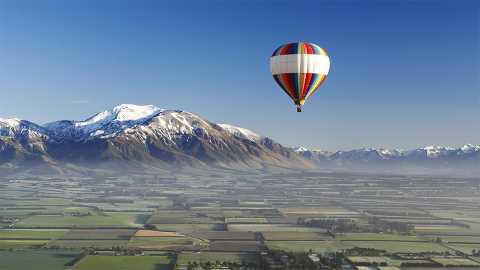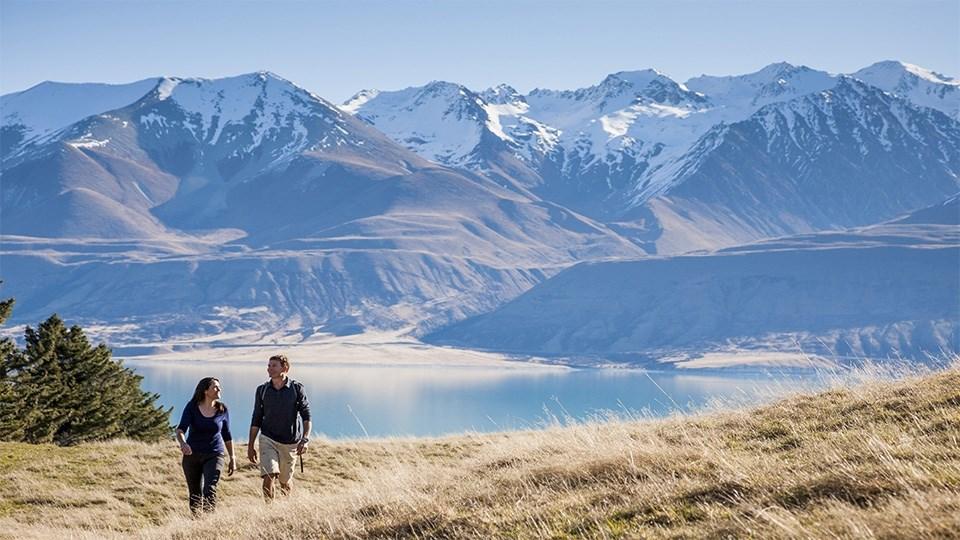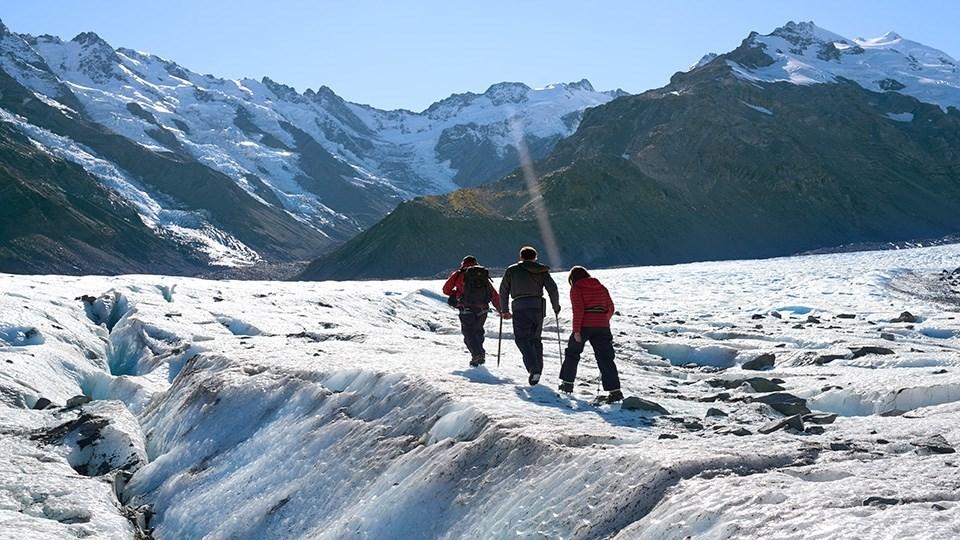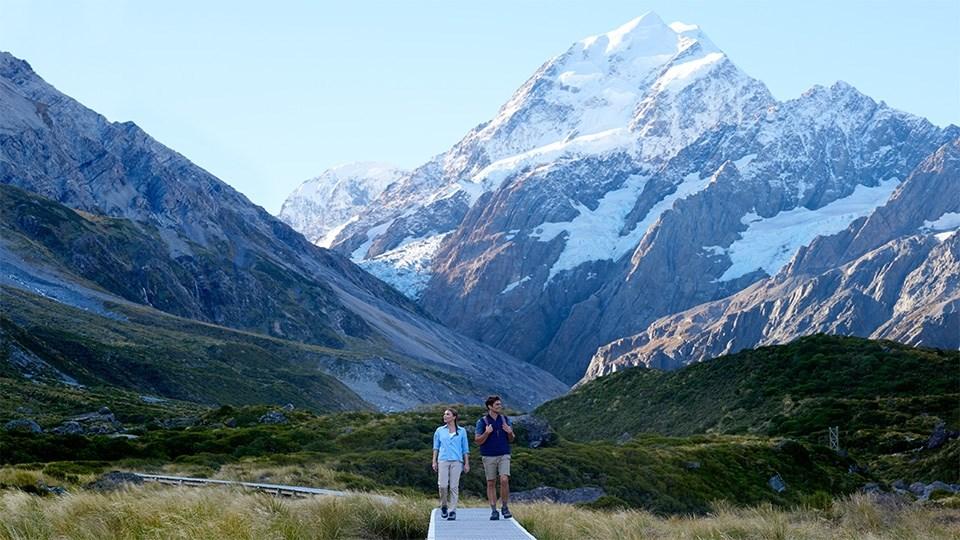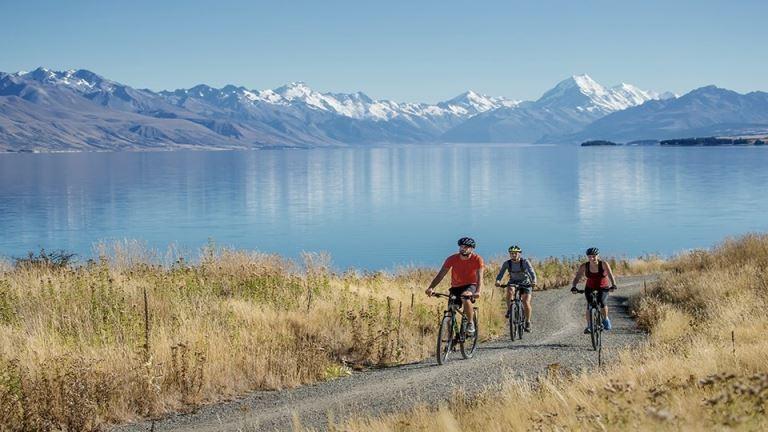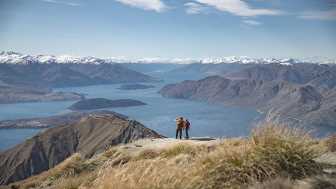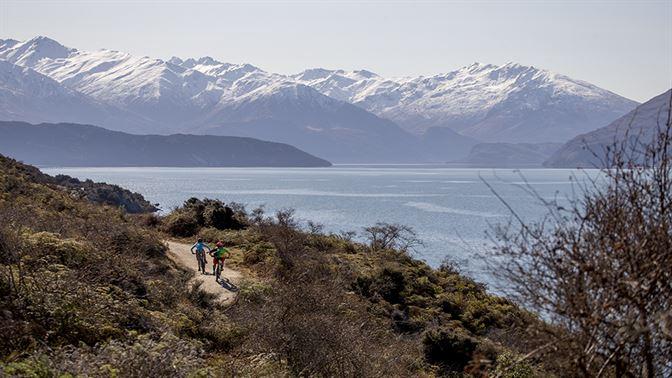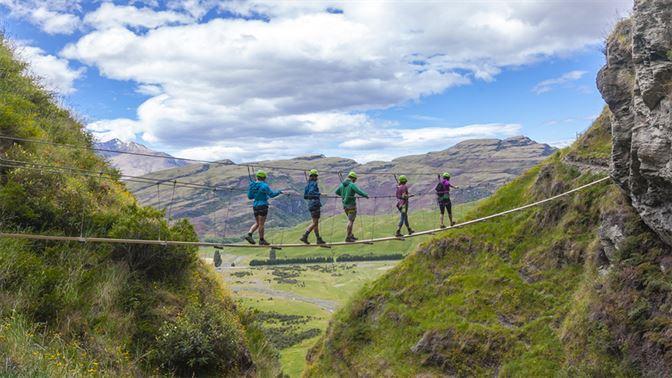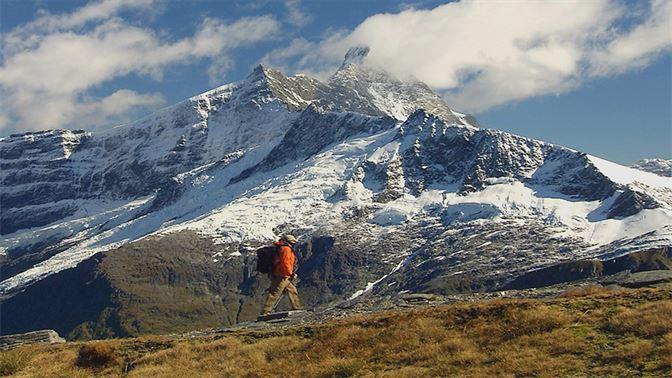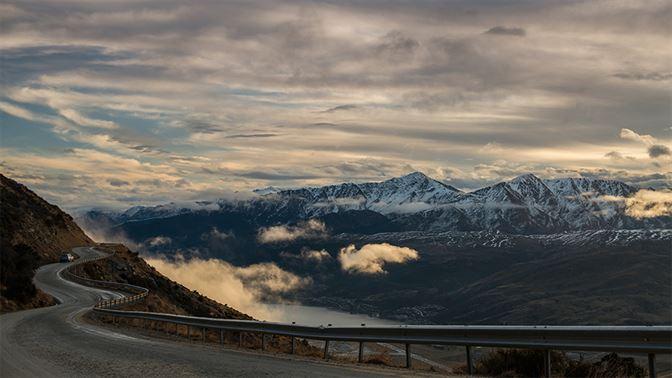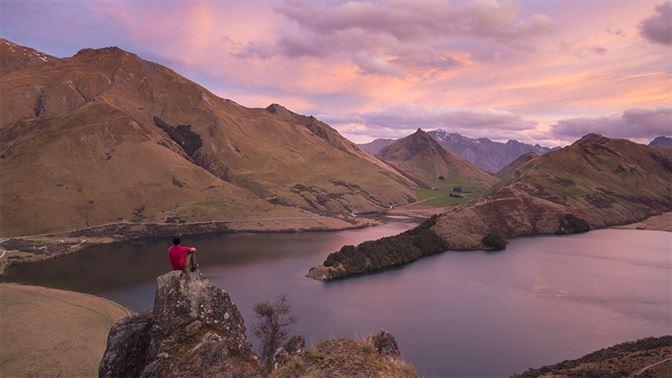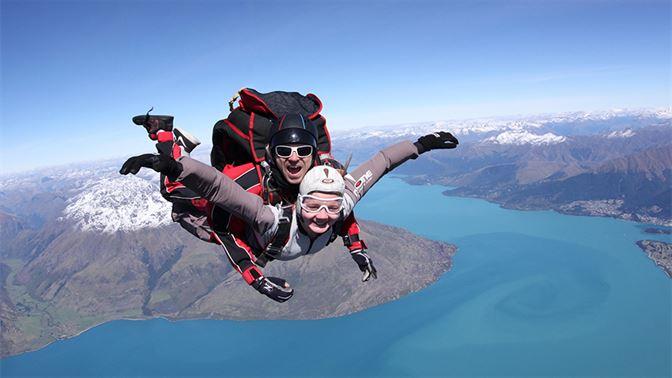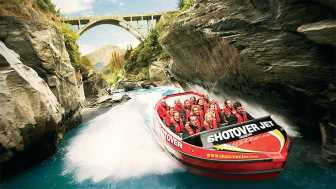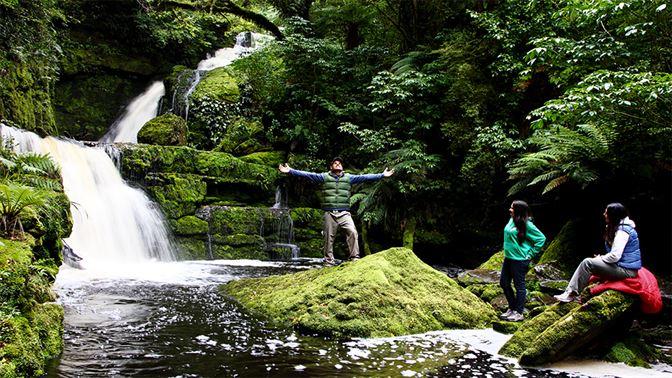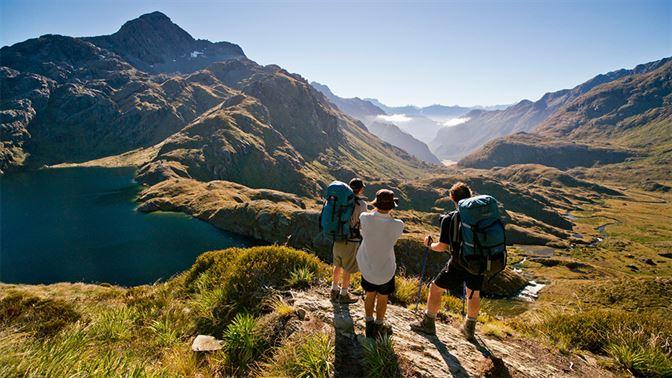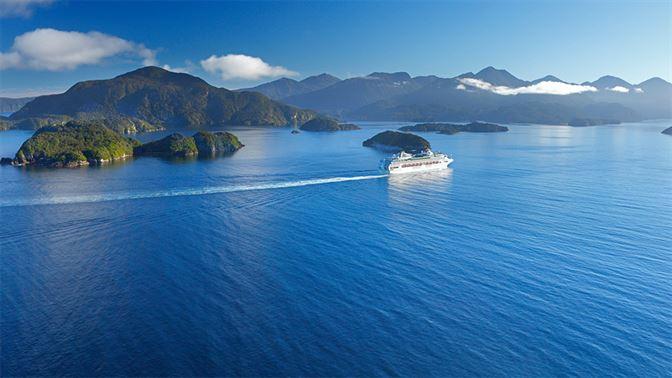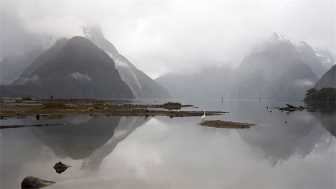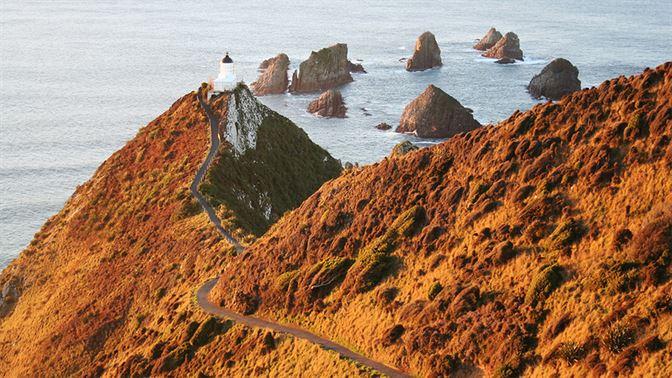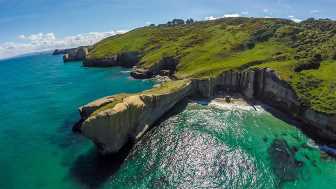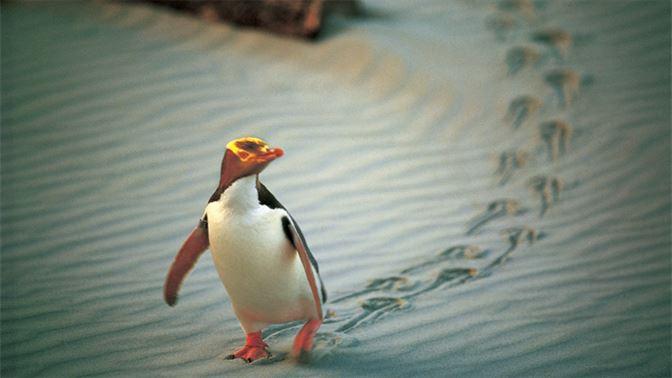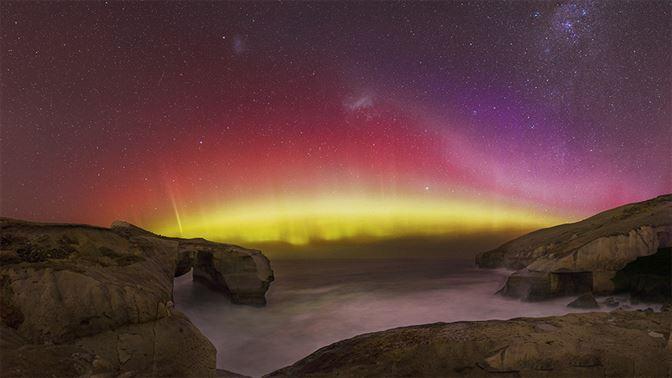New Zealand destination guide
New Zealand's landscapes are incredibly diverse. Snow-capped mountains, impressive fiords, majestic glaciers, lush rainforests, volcanoes, geothermal wonderlands and subtropical beaches, the list goes on. With an incredible array of things to see and do, it's sometimes difficult to find out where to start planning your journey to New Zealand you're about to embark on.
In order to help you explore the different destinations in New Zealand, we've put together a destination guide below, showing you the main highlights and attractions per region. So start exploring and get inspired!
Auckland Overview
Auckland is New Zealand's largest city and will most likely be your entry point into New Zealand. Also known as the City of Sails, or as Kiwis themselves name it Little Big City, Auckland is certainly the most vibrant and most happening city in New Zealand.
By international standards it's quite small, but it's also one of the world's most exciting waterside cities. Situated in the Hauraki Gulf the city is surrounded by water, and this is reflected in the number of leisure boats per capita, which is the highest in the world. To really appreciate it, you have to take to the waters, sailing on the harbour or taking a ferry to one of the numerous islands, including Waiheke and Rangitoto Islands, or a little bit more off the beaten track, Great Barrier Island.
On land, Auckland sits on a large field of extinct volcanoes, 48 to be precise, and if you choose wisely which one to visit, you will be rewarded with amazing views of the city! The major landmark in the city is Auckland's Skytower, the tallest building in the Southern Hemisphere. From the top you can enjoy 360 degrees of the city, surrounding harbours and islands, and the Waitakere Ranges in the West. There are plenty of beaches to enjoy, from the calm waters on the Eastern side to the rugged surf pounded West Coast beaches of Piha, Muriwai and Bethell's Beach . The region also has some fantastic options for hiking in the Hunua and Waitakere Forest Ranges.
The city itself boasts an eclectic mix of cultures, with large influences from Pacific Islanders and Asians. It's these foreign influences that help give Auckland a much more cosmopolitan feel than other New Zealand cities. It also because of this diversity that Auckland has the best range of dining options in the country, with excellent bars and restaurants scattered across the city and the suburbs.
Things you shouldn't miss in Auckland
- Kayaking around Rangitoto Island, or embark on a walk on volcanic rock.
- A visit to one of the wineries on Waiheke Island
- Hiking in the cool and lush rainforests of the Waitakere Ranges.
- Sailing in the Auckland Harbour
- A visit to the Skytower, the Southern Hemisphere's tallest building
- Enjoy a drink or meal at Auckland's vibrant waterfront
- A trip to the spectacular and surf pounded Auckland West Coast beaches of Piha, Muriwai and Bethell's Beach
- Auckland Bridge Climb
Ponsonby market

Ponsonby market
Rangitoto Island

Rangitoto Island
Eastern Bays

Eastern Bays
Waiheke Island winery

Waiheke Island winery

Northland and Bay of Islands Overview
Northland is a region in New Zealand rich with historic significance, and it is also the birthplace of New Zealand. It is one of the first regions settled from Polynesia, and also the place where the European settlers first made contact with the Maori. The main attraction in this region is the sublime maritime park of the Bay of Islands, with no less than 144 islands and secluded bays. Most visitors queue up for the Bay of Islands, but all along the East Coast you'll find scenic, sheltered bays and exquisite beaches.
Also called the "Winterless North", the subtropical climate is pleasant throughout the year, and an aquatic playground for a whole range of leisure and adventure activities such as diving, fishing, sailing, surfing, kayaking and dolphin swimming. The main gateway for these activities is Paihia.
The towns in the Bay of Islands are great places to learn about New Zealand's history. Waitangi is where the treaty between Maori and European settlers was established. The historic buildings in the picturesque seaside town of Russell a well worth a visit.
The Far North feels a lot more isolated but a trip to New Zealand would not be complete without visiting its most northern point at Cape Reinga, where the Tasman Sea meets the Pacific Ocean. The drive up to Cape Reinga allows for numerous stops on Ninety Mile Beach and its massive sand dunes. The two remote beaches of Tapotupotu Bay and Spirits Bay are an excellent side trip for those wanting to get off the beaten path.
The western side of Northland is less visited, but makes for a great loop journey. Hokianga harbour is a place to truly unwind as many alternative lifestylers have found out, and the find the largest Kauri trees in New Zealand at the Waipoua forest.
Things you shouldn't miss in Northland
- Hike one of the coastal tracks at Cape Reinga.
- Drive along the Tutukaka Coast. The approach to the Bay of Islands is simply stunning.
- Learn about New Zealand's history at the Waitangi Treaty grounds.
- Swim with dolphins or kayak in the Bay of Islands.
- Hire a charter and go fishing. A great catch is guaranteed as these are some of the best fishing grounds of New Zealand!
- Explore one of the many surf excellent breaks such as Taupo Bay, Ahipara and Sandy Bay.
- A visit to Whangaroa Harbour, the most beautiful harbour in New Zealand.
- Sandboarding down the massive dunes of Ninety Mile Beach.
Whangaroa Harbour

Whangaroa Harbour
Kayaking Bay of Islands

Kayaking Bay of Islands
Hole in the Rock

Hole in the Rock
Dolphin watching

Dolphin watching
![]()
Coromandel Overview
The Coromandel Peninsula is a favourite among New Zealanders themselves, and it's not hard to understand why. Its only a 2 hour drive from the major cities Auckland and Hamilton, but yet it feels quite remote and isolated, so it's an ideal escape from the hustle and bustle of city life. The fact that is also boasts some of New Zealand's finest and most pristine beaches may obviously play a big role as well!
Lifestyle in the Coromandel is very relaxed and there are many coastal towns each with their own distinct character scattered across the peninsula. It is a haven for those seeking an alternative lifestyle away from the city.
On the west coast of the peninsula you'll find the historic towns of Thames and Coromandel, with more remote settlements and rugged coastline the further north you go. The best coastal scenery and beaches are found on the eastern side of the peninsula, and consequently also attracts most visitors.
Beaches are not the only main attraction in the Coromandel. Its interior is rugged and densely forested, where rivers force their way through gorges and pour down steep cliffs to the sea. The Coromandel Forest Park stretches almost the entire length of the peninsula and provides ample hiking, camping and fishing opportunities.
The Coromandel also has a rich history, in particular in mining, with the goldrush in the eighteen hundreds, but Kauri logging was also big business for around 100 years. But it is also the place where Captain James Cook anchored at Cooks Beach in 1769.
Things you shouldn't miss in Coromandel
- Camp at one of the sublime DOC campgrounds at the northern tip of the peninsula and get off the beaten track. These include Port Jackson, Stony Bay and Waikawau Bay.
- Hike up to the Pinnacles in the Kauaeranga Valley for a real Jurassic Park feeling.
- New Chum's Beach, one of the top 10 beaches in the world according to Lonely Planet. And we don't argue with that!
- Drive along the Pohutukawa Coastline on the western side of the peninsula.
- Enjoy an incredible seafood platter in Whitianga, or if you happen to be there during he weekend, visit the local market.
- Karangahake Historic Walkway, giving access to the remains of the mining era.
- Driving Creek Railway, great for families with children.
- The famous hot spots Cathedral Cove and Hot Water Beach.
- The 309 Road between Coromandel Town and Whitianga with its many attractions including the Waterworks amusement park.
Cathedral Cove

Cathedral Cove
Kayaking Cathedral Cove

Kayaking Cathedral Cove
Hahei Beach

Hahei Beach
Hauraki Rail Tral

Hauraki Rail Tral
![]()
Waitomo/Waikato and Rotorua Overview
Green rolling hills and lush farmlands are the main decor in Waitomo/Waikatoa, and it is home to some well known icons such as the world class surf breaks in the bohemian seaside town of Raglan, which also happens to be our home. The set for the Shire in the Lord of the Rings and Hobbiton movies in Matamata is a unique experience not to be missed, and the world famous Waitomo Caves are a magical place, with numerous options to explore the caves, whether participating in one of the many adventure activities or marvelling at the wonderful light display created by glowworms.
Rotorua is New Zealand's main geothermal area and a centre where Maori culture thrives. It is situated on the shore of Lake Rotorua, and the whole region offers a mix of pristine lakes to enjoy. Explore the many geothermal wonderlands with boiling mud pools, geysers, steamy and colorful lakes, and unwind at a natural hot spring spa or choose from one of the therapeutic spa and massage therapies
To experience the Maori culture in this region, catch a Maori Cultural performance where you'll learn about Maori culture through song and dance, and will feast on a "Hangi", the traditional Maori way of cooking food underground.
Rotorua is sometimes dubbed "Rotovegas" for the incredible amount of activities on offer. Take a ride up the Skyline Gondola, to come back down again in the luge, a fun activity for the whole family. Hit the world class Red Woods mountain biking trails, or try out one of the unique adventure activities such as zorbing, sledging or a ziptrek tour, the options in Rotorua are endless.
Things you shouldn't miss in Waitomo/Waikato and Rotorua
- The world class surf breaks in Raglan, including a side trip to the idyllic Bridal Veil Falls.
- Lord of the Rings and Hobbiton movie set tour of the Shire.
- Explore the Waitomo Caves.
- Visit the Wai-O-Tapu Geothermal wonderland or Waimangu Volcanic Valley.
- Relax and unwind at a Polynesian Spa.
- Experience a Maori cultural performance.
- Hike the Tarawera Trail at Lake Tarawera.
Maori Cultural Experience

Maori Cultural Experience
Lake Rotorua

Lake Rotorua
Rotorua redwoods

Rotorua redwoods
Waitomo Caves

Waitomo Caves
Taupo - Central Plateau Overview
New Zealand's main volcanic area, the Taupo Volcanic Zone, stretches in a line from White Island, north of the Bay of Plenty, through Rotorua and down to Tongariro National Park, which proudly claims the title of dual UNESCO World Heritage Area. The Central Plateau, at the heart of the North Island, is the centre of New Zealand's volcanic activity, and the volcanoes put on a spectacular show from time to time, perhaps once around every 7 years.
The Ruapehu/Tongariro National Park region is a mecca for outdoor lovers, year round! Summer is a great time to hit the hiking or biking trails, and in winter you can ski down an active volcano, and it is also the largest ski field in New Zealand! The world famous Tongariro Alpine Crossing is New Zealand's premier day hike, if not one of the world's! For an even greater appreciation of all the volcanoes, the Tongariro Circuit is a 3-4 day tramp around the volcanoes and is one of New Zealand's Great Walks. The fresh rivers near Turangi provide for world class trout fishing, which can also be found in Taupo.
Lake Taupo is New Zealand's largest lake. In fact, it is the largest fresh water lake in Australasia, and with the plethora of activities on offer (from fishing and boating on the lake or scenic flights over the voclanoes to the adrenaline pumping activities such as skydiving, bungy jumping, jetboating) it is on most traveller's itineraries. Taupo is also the source of New Zealand's longest river, the Waikato River, and the Huka Falls are a spectacular sight to behold.
Due to its close proximity to the volcanoes, you can also find a lot of geothermal activity around Taupo. The Orakei Korako thermal area receives fewer visitors than other thermal areas due to its more remote location, but it's probably one of the best thermal areas left in New Zealand, and possibly the world.
Things you shouldn't miss in Taupo - Central Plateau
- Make sure you include the Desert Road drive in your touring route, one of the most scenic drives in New Zealand.
- A scenic flight around the dual World Heritage Area volcanoes.
- Visit the Huka Falls
- A hike in Tongariro National Park
- Hire a mountain bike and hit the trails around the volcanoes.
- Ski down an active volcano in winter
- Relax on the shores of Lake Taupo
Huka Falls Jet

Huka Falls Jet
Lake Rotopounamu

Lake Rotopounamu
Lake Taupo

Lake Taupo
Mt Ruapehu

Mt Ruapehu
![]()
Napier/Hawke's Bay and East Coast Overview
The East Coast of New Zealand is a sun blessed region and receives most sunshine hours annually across the entire country. No surprise it is also one of the largest wine regions in the country, and there's no shortage of world class wine to sample on a variety of available wine tours.
Beautiful beaches can be found all along the East Coast, and as the first place to see a new day in the world, the sunrises on show every morning are devastatingly spectacular. Inland you'll find towering forested hills in the Kaweka and Raukumara Forest parks, and a little more inland the majestic Te Urewera Park, taking you back in time with ancient and enchanting forests.
The East Cape is a scenic, isolated and little known region in the North Island where the pace of life is laid back and the settlements are predominantly Maori. The drive around the Cape offers magnificent views of the wild coast dotted with little bays, inlets and coves that change their mood together with the weather. For a unique, remote experience off the main tourist trail, this is a must place region to visit in New Zealand.
Lying on sweeping Hawke's Bay, Napier is famously known for its Art Deco architecture, and much of the city centre is decorated with the distinctive Art Deco design. The city has a vibrant cafe culture and is a great way to appreciate the unique style of the surrounding buildings. Some of the top wineries in the region are also found within a few kilometers from the city limits.
Things you shouldn't miss in East Coast - Napier/Hawke's Bay
- Needless to say that you really should sample some world class wine in the region!
- Drive around the East Cape and experience the real New Zealand.
- Be the first in the world to see a new day and catch a sunrise.
- Hiking in Te Urewera Park, also the home of one of the New Zealand great walks, the Lake Waikaremoana track.
- Surfing the beaches north of Gisborne, offering some of the best waves in the country.
- Spend some time in Napier's City Centre with its Art Deco architecture.
- A drive up to Te Mata Peak, with sweeping views of the Bay and the Kaweka Ranges to the east.
Anaura Bay

Anaura Bay
Kaweka Forest

Kaweka Forest
Napier

Napier
Te Mata Peak

Te Mata Peak
![]()
Taranaki Overview
Taranaki might be a slightly less known region in New Zealand, unless you're a keen surfer or windsurfer. The landscape is dominated by the perfectly shaped volcanic cone which is Mt Taranaki, or Mt Egmont. At 2500m not only does it entirely dominate the landscape, but it also creates its own climate. On any given day, the winds may be reaching gale force on one side of the mountain, while on the other side you may be relaxing on the beach without a sigh of wind, such is the impact of the mountain.
In winter you may ski down the mountain in the morning, and in summer there are a number of excellent hiking opportunities, including hikes to the summit or right around the mountain.
Surf Highway 45 offers word class surf and windsurfing conditions and the black iron sandy beaches are wild and beautiful and aplenty.
Things you shouldn't miss Taranaki
- A road trip of Surf Highway 45 with the imposing Mt Taranaki in the background.
- One of the hikes in Egmont National Park, in particular the Pouakai Crossing, a fresh alternative for the busy Tongariro Crossing.
- A visit to the Len Lye art centre, an unmissable experience and labelled Taranaki's answer to the world famous Guggenheim in New York.
- If timing is right, catch the Festival of Light in summer or the World of Music and dance festival WOMAD
- Surfing one of the many world class breaks on Surf Highway 45.
- The Forgotten World Highway, an incredibly memorable driving journey.
Mokau coastline

Mokau coastline
Mt Taranaki

Mt Taranaki
Poukaia Circuit

Poukaia Circuit
![]()
Wellington Overview
Wellington is a destination with many superlatives. It is beautifully nestled between bush clad hills and one of the most picturesque harbours in the world, it was named the best city to live in the world in 2017, and it is also one of the windiest cities in the world. But as Wellingtonians say : You can't beat Wellington on a good day, and we certainly have a soft spot for this fantastic city.
Wellington is the nation's centre for arts and culture, with the National Museum Te Papa one of the main icons of the city. The city also contains a plethora of restaurants, cafes, bars, nightlife and activities and is also home to New Zealand's parliament. Due to its compact size it is easy to explore the city on foot.
The region east and northeast of Wellington is also known as the Wairarapa, with wineries in Martinborough and some excellent hiking in the Tararua Ranges. The driving route through the Wairarapa is a mountainous, pleasant alternative to busy State Highway 1.The Wairarapa coast from Palliser Bay to Castlepoint is one of the most remote and intriguing coasts in the North Island.
Things you shouldn't miss in Wellington
- A visit to the National Museum, Te Papa.
- Stroll around Cuba Street and absorb the lively atmosphere.
- Try one of Wellington's many amazing local craft beers.
- For the best view of the city, take a ride up to Mt Victoria.
- See lots of unique birdlife at the Zealandia sanctuary, a great option for families with kids.
- A Lord of the Rings movie tour
- The scenic Wairarapa coast
Wellington City

Wellington City
Wellington waterfront

Wellington waterfront
Wellington Cable Car

Wellington Cable Car
Te Papa museum

Te Papa museum
![]()
Marlborough Overview
When travelling from the North Island to the South Island on the Interislander ferry, the sheltered waterways of the Marlborough Sounds are the first sight. Picton is the destination port, and a good base to go walking, fishing, sailing, kayaking and exploring the many secluded bays in the Sounds.
The Marlborough region is internationally recognized for its world class wine, most notably its Sauvignon Blanc, and there are many different ways to sample these wines as their are many wineries offering excellent wine tours. By bike, or by luxury old timer cars, the creativity with which these tours are organized is brilliant. The seafood in this region is also sumptuous, great to combine with a glass of the local wines.
Those put off by the large crowds on the Abel Tasman Track will love the Queen Charlotte Track. The beaches are a little less exquisite, but the coastal scenery is still stunning and there are many accommodation options aolong the track.
Things you shouldn't miss in Marlborough
- A visit to one of the wineries in the region
- Enjoy a seafood platter with one of the local wines.
- Hiking or biking the Queen Charlotte Track
- A cruise in the Sounds.
- The Marlborough food and wine festival (only in February)
Marlborough Sounds

Marlborough Sounds
Marlborough Sounds Lunch

Marlborough Sounds Lunch
Wine tasting

Wine tasting
Queen Charlotte Track

Queen Charlotte Track
![]()
Nelson-Tasman Overview
The Nelson-Tasman region is blessed with an incredibly diverse natural beauty, offering no less than three of the finest National Parks in the country. From the golden beaches of Abel Tasman National Park, dramatic and lush rainforests in Kahurangi National Park, to the alpine environment of Nelson Lakes National Park, this region has it all. The area around Nelson is also one of the sunniest in the country, due to the protecting surrounding hills, so it's a popular region with travelers.
Nelson is the South Island's second largest city, noted for its fruit-growing industry in the Motueka Valley, wineries and micro-breweries. It also has an energetic local arts and crafts community with local artists exhibiting their products on the famed Nelson market every Saturday. Nearby Rabbit Island boasts great swimming beaches, boating fishing and forest walks.
Further west, Motueka is the centre of a green tea, hops and fruit-growing area, and is a good base to explore the nearby parks. The drive over Takaka Hill takes you into Golden Bay, whre you may find the biggest cave in the Southern Hemisphere as well as New Zealand's largest freshwater spring, the Waikoropupu Springs, simply called "Pupu Springs", with reputedly the clearest water in the world.
Kahurangi and Nelson Lakes National Parks offer excellent hiking trails well off the main tourist trail, and are becoming increasingly popular for this particular reason. But by far the most popular National Park is Abel Tasman National Park. It is truly a coastal paradise and also easily accessible. Water taxis departing from Marahau or Kaiteriteri can drop you off at any location in the park, and it is therefore also a popular option for families traveling with children wanting to hike only part of the Great Walk, or just spend a few nights at one of the campgrounds and enjoy the golden beaches.
Things you shouldn't miss in Nelson-Tasman
- Spend some time in 3 fantastic National Parks : Abel Tasman National Park, Kahurangi National Park and Nelson Lakes National Park
- Visit the Pupu Springs in Takaka, with the clearest waters in the world.
- A trip to Farewell Spit in Golden Bay.
- Visit the Nelson market, one of the most famous in the country
- A heli flight in Kahurangi National Park
- Sea-kayaking in Abel Tasman National Park
Lake Rotoiti

Lake Rotoiti
Mt Owen

Mt Owen
Abel Tasman Beach

Abel Tasman Beach
Abel Tasman National Park

Abel Tasman National Park
![]()
Kaikoura Overview
Kaikoura is a unique place by the sea where marine wildlife lives in abundance, against the backdrop of the impressive Kaikoura mountain ranges. It is well known for its range of eco-tourism activities and getting up close with the main inhabitant along its shores, the giant Sperm Whale.
Whale watching in Kaikoura is simply a must-do as you're guaranteed to see these magnificent creatures in their natural habitat, and along the way you're most likely to see a pod of bottlenose or duksy dolphins play in the water, be impressed by the take-off and water landing of the Royal Albatross, and see a bunch of sea lions lazing about on a rock, suc is the diversity.
The ocean here also provides some spectacular seafood, and a stay in Kaikoura may not go by without having tried the crayfish.
The Kaikoura Ranges provide some great hiking options, with stunning views of the Banks Peninsula from the top of Mf Fyffe.[Note that some of the hiking tracks have been temporarily closed due to the 2016 earthquake].
Things you shouldn't miss in Kaikoura
- Get up close with the sperm whale on a whale watching tour.
- Try the local crayfish.
- Paddle in the calm waters in a sea-kayak.
- Swim with dusky dolphins or seals.
- Find some excellent surf breaks along the coast.
Dusky Dolphins

Dusky Dolphins
Kaikoura Peninsula

Kaikoura Peninsula
Kaikoura fur seal

Kaikoura fur seal
Sperm whale

Sperm whale
![]()
West Coast - Glaciers Overview
The West Coast or Westland is a rugged and wild land with rocky beaches, deep river gorges, bush-clad hills and towering icy-peaks. Extending across a 600km long stretch on the western side of the Southern Alps, a visit here takes you through a myriad of five National Parks, yes five!!, including the World Heritage Area - Te Wahipounamu. Each of the national parks - Kahurangi, Paparoa, Arthur's Pass, Westland and Mt Aspiring National Parks - have their their own unique and distinct features. You'll find New Zealand's highest mountains, most dense and lush rainforests, natural rivers, glacial lakes, deepest gorges, and of course the two phenomenal Glaciers themselves, Fox and Franz Josef.
The West Coast also has a rich mining history, with remnants throughout the thick bush and by the rivers. Historically also a major source of greenstone, Hokitika is the best place in New Zealand to see it being crafted.
The road fro Murchison to the West Coast through the Buller Gorge is scenic, and the main attractions in the gorge itself is the watersports activities available such as white water rafting, kayaking and jetboating. Westport, the main town on the West Coast, and where the Buller River drains into the sea, is still a coal mining town and a good stopover en route further south.
The small settlement of Punakaiki offers some of the finest coastal scenery on the West Coast, or New Zealand for that matter, and is known for its fascinating Pancake Rocks and blowholes. These limestone rocks look like stacks of thin pancakes and when the tide is right, the water surges into the caverns under the rocks and squirts out water in impressive blowholes. The Paparoa National Park also features many natural attractions : mountains, rivers, wilderness areas and caves. From 2019 onwards this National Park will also host a new Great Walk in New Zealand.
The two most famous glaciers in the Westland National Park, Fox and Franz Josef, are among the main attractions in New Zealand. Nowhere else in the world have glaciers advanced to close to sea, and epitomize the definition of glaciers : mighty rivers of ice tumbling down a valley. The best way to experience the glaciers is to walk on them, either in a guided walk or even better, via a heli-flight. This not only gives better aerial views of the glacier, but it takes you much further up as well, providing you with the opportunity to explore the deep blue ice caves.
Things you shouldn't miss in West Coast - Glacier Country
- Get up close and walk on a glacier on an epic Heli-Hike on either Fox or Franz Josef Glacier.
- Visit the Punakaiki Pancake rocks with their impressive blowholes.
- Walk around Lake Matheson for picture perfect reflections of Mt Cook in the background.
- Head into the trees on a unique Tree Top Walk near Hokitika.
- Visit the historic mining towns of Reefton and Shantytown.
- Hokitika Gorge, a small but stunning gorge with the turquoise blue waters of the Hokitika River.
- Take the Tranzalpine express from Greymouth through the Southern Alps
Hokitika Gorge

Hokitika Gorge
Oparara Arches

Oparara Arches
Glacier Country Heli-Ice

Glacier Country Heli-Ice
Paparoa National Park

Paparoa National Park
Canterbury Overview
Canterbury is the hub of the South Island and contains its largest city, Christchurch. It is also one of the driest and flattest areas of New Zealand. The moisture-laden westerlies from the Tasman Sea hit the Southern Alps and dump their rainfall on the West Coast before reaching Canterbury. The region is dominated by the expansive Canterbury Plains, dead-flat farming land backed by the Southern Alps.
Christchurch was hit by devastating earthquakes in 2011 which damaged a lot of the inner city's infrastructure, but the city is bouncing back remarkably and the creativity and community spirit has made the city a vibrant place once again. The city's botanic gardens receive international acclaim and a great place to relax before you start your journey or have concluded your journey, as you're most likely to start or end your tour in Christchurch. The nearby Banks Peninsula was formed by two giant volcanic eruptions and has a strong French influence. The picturesque harbour of Akaroa is well worth a visit.
In North Canterbury the thermal waters of Hanmer Springs have been attracting visitors for many years, but the region is also popular for outdoor activities including hiking, rafting, bungy jumping and skiiing in winter. All of this action means it is a favourite weekend spot for people from Christchurch.
The route to the West Coast from Christchurch goes via Arthur's Pass, a small alpine village amid some spectacular alpine scenery. Many of the park's day hikes offer 360 degree views of the snow-capped peaks, most notably the Devil's Staircase. However, the most memorable journey from East to West is undeniably via the scenic Tranzalpine Express train.
Further inland heading South, the high country from which the Mt Cook park rises is known as McKenzie country. The small town of Tekapo has sweeping views across the turquoise lake with snow-capped mountains as the backdrop, and is generally the first stop towards the Southern Alps. The night skies are the best in New Zealand and occasionally the Australis Borealis (southern lights) are putting on a show, so if you happen to be there when this extraordinary phenomenon occurs, consider yourself very fortunate!
Things you shouldn't miss in Canterbury
- Take a break at Lake Tekapo and soak in the grandeur of the magnificent Southern Alps.
- An exhilirating Canterbury Alpine Safari.
- A visit to Akaroa Harbour in Banks Peninsula.
- Lake Tekapo night skies.
- Soaking in the Hanmer Springs thermal hot pools
- Skiing at Mt Hutt in winter
Lake Tekapo stargazing

Lake Tekapo stargazing
Mt Hutt

Mt Hutt
Tekapo Hot Springs

Tekapo Hot Springs
Canterbury Plains

Canterbury Plains
Aoraki Mt Cook Overview
The approach to new Zealand's tallest mountain, Mt Cook, via the blue lake of Lake Pukaki is something you will remember for a lifetime. At 3754m Mt Cook entirely dominates the landscape and as you draw ever closer, its imperious glaze on you only gets more and more impressive.
Mt Cook National Park, along with Aspiring and Westland National Parks, have been incorporated into a World Heritage Area extending from the Cook River in Westland down to the base of Fiordland. Of the 27 mountains in New Zealand which are over 300om, 22 of them are in Mt Cook National Park. The park also boasts New Zealand's longest glacier, the Tasman Glacier.
The park offer numerous hikes to get up close with Mt Cook, but also offer many other exciting adventure activities, such as mountaineering, helicopter flights, heli-skiing and sea-kayaking on glacial waters.
Things you shouldn't miss in Aoraki Mt Cook
- Explore Mt Cook National Park on one of the many hikes available in the park, the Hooker Valley being the most popular.
- A helicopter flight above Mt Cook and the National Park.
- Glacial sea-kayaking
Lake Tekapo

Lake Tekapo
Mt Cook National Park

Mt Cook National Park
Hooker Valley

Hooker Valley
Lake Pukaki

Lake Pukaki
![]()
Wanaka Overview
Wanaka receives slightly less attention than it's more famous neighbour Queenstown, only about an hour away, but one may argue which of the two towns is nestled in the most impressive scenery. While that may be a very difficult question to answer, Wanaka boasts a similar range of adrenaline activities, but with some more serenity about it all. The town offers fine dining and living and is the gateway to Mt Aspiring National Park and the Treble Cone, Cardrona, Harris Mountains and Pisa Range ski areas. Every second Easter, Wanaka hosts the incredibly popular Warbirds over Lake Wanaka, a huge international air show that sees the town swell with visitors.
The central feature of the region is Mt Aspiring, surrounded by the national park with the same name. The alpine scenery does not get any more dramatic than this in New Zealand, and offers some of the best hiking in the country. The park has wide valleys, secluded flats, more than 100 glaciers and towering mountains. The southern end of the park around Glenorchy receives most visitors and includes popular hikes such as the Routeburn Track, one of New Zealand's great walks, but there are also excellent shorter walks and more demanding hikes in the Matukituki Valley close to Wanaka.
Things you shouldn't miss in Wanaka
- Mt Aspiring National Park
- Hike up to Roy's Peak
- Experience some of the adventure activities on offer such as jetboating, skydiving, rafting, canyoning, climbing and sledging.
- Hit the ski fields in winter
- Fine dining in downtown
- A visit to the mind boggling puzzle world, excellent for families with children.
Roy's Peak

Roy's Peak
Glendhu Bay

Glendhu Bay
Wildwire Wanaka

Wildwire Wanaka
Mt Aspiring NP Hiking

Mt Aspiring NP Hiking
![]()
Queenstown Overview
For a long time Queenstown in Central Otago has had an international reputation for its spectacular scenery and adventure activities, but the region is now also recognized for its award winning wines.
Queenstown is the unofficial 'adventure capital of the world', but the entire Wakatipu region with its stunning lake and surrounding mountains alone are a real attraction. The aptly named Remarkable mountains provide the most breathtaking backdrop, whether snow capped in winter, or at sunrise or in the afterglow at dusk.
Facilities in Queenstown are excellent as well, from budget to boutique accommodation options, some of the best dining in New Zealand and a buzzing nightlife with numerous cafes and bars.
There's also great skiing in winter on Coronet Peak and Cardrona and plenty of substitute adrenaline activities in summer. Bungy jumping was invented in New Zealand and Queenstown offers a plethora of jumping options. There's also skydiving, jetboating, mountainbiking, canyoning, white water rafting, hiking, sledging, parapenting, the list is simply endless.
But it's not all adventure in Queenstown. For a more relaxed appreciation of the surroundings, lake cruises operate on Lake Wakatipu, the most famous being the TSS Earnslaw. The kiwi and birdlife park is a popular option for families with children and includes two nocturnal kiwi houses.
The tiny picturesque town of Glenorchy at the head of Lake Wakatipu offers a tranquil escape from Queenstown is the drive along the lake is one of the most scenic in New Zealand. If you're in search of Paradise, it is located about 15kms from Glenorchy, at the start of the Rees-Dart track. Hiking opportunities are plentiful here, and it's also the starting location of the word famous Routeburn Track, one of New Zealand's great walks.
Things you shouldn't miss in Queenstown
- One of the adventure activities, just take your pick.
- A ride up the Skyline gondola for magnificent views
- Explore some of the hiking in the region
- World class mountain biking trails
- Some of the best dining in New Zealand
- Skiing in winter.
Crowne Range Road

Crowne Range Road
Moke Lake

Moke Lake
Skydiving Queenstown

Skydiving Queenstown
Jetboating

Jetboating
![]()
Southland Overview
Southland is most famous for Milford Sound, and while a visit to Milford Sound simply cannot be missed, it is well worth spending a little more time in this incredible frontier of rugged fiords, mountains, spectacular coastal scenery and an abundance of marine and bird wildlife.
The spectacular Fiordland National Park, part of Te Wahipounamu World Heritage Area, includes some of the best walks in New Zealand such as the world famous Milford and Routeburn Tracks. Along the Milford track you'll find a sign somewhere "the finest walk in the world", and we don't argue that. It is right up there and the scenery is jaw-dropping from start to finish. Three of the walks in Fiordland National Park also belong to the Great Walks of New Zealand, the Milford, Kepler and Routeburn. The gateway into Fiordland National Park is Te Anau, beautifully situated on the shores of Lake Te Anau.
To appreciate the immensity of this region, take a scenic flight or a boat cruise or even an overnight kayaking trip in the sounds. While the Milford Sound may grab the most attention, there are also options for the more remote Doubtful and Dusky Sounds with equally dramatic scenery, so for those wanting to escape the hords, head into these fiords. Milford Sound may be more immediately spectacular as it has the imposing Mitre Peak, but Doubtful Sound is larger and also features magnificent wilderness areas.
Stewart Island, or Rakiura in Maori, is New Zealand's third largest island and becoming increasingly popular to get away from it all. The Rakiura Track opened a few years ago and is now also one of New Zealand's Great Walks. If there's one place in New Zealand where you're likely to encounter the local icon, the Kiwi bird, then it here on Stewart Island.
Things you shouldn't miss in Southland
- Some of the best hiking on the planet, whether the Milford Track, Routeburn Track, Holyford Track, Kepler Track, Humpridge Track, you can't go wrong here!
- A cruise in one of the Sounds or a scenic flight above them.
- For a more family friendly hiking option, walk up to Key Summit, part of the Routeburn track and starting along the Milford Road.
- An overnight kayaking experience in the Doubtful Sound wilderness.
- A visit to the Te Anau glowworm caves.
McClaren Falls

McClaren Falls
Routeburn Track

Routeburn Track
Dusky Sound Cruise

Dusky Sound Cruise
Mitre Peak - Milford Sound

Mitre Peak - Milford Sound
![]()
Dunedin Overview
Dunedin is the second city of the South Island after Christchurch, a quaint city with many historic buildings and blessed with a magnificent harbour. The surrounding Otago Peninsula and area is renowned for its incredible diversity of marine wildlife, and eco-tourism thrives here. You can get up close with the world's rarest penguins, visit the world's only mainland breeding ground of the Royal albatross and see fur seals ans sea lions laze about on a rock or beach.
The dramatic coastline in this region has many stunning white sandy beaches with excellent surfing as well, though the water is cold here. Tunnel Beach just south of St Clair beach has sea-carved limestone cliffs rock arches and caves and kids will love the walk through an the excavated cave to a secluded and spectacular beach.
Further down the coast is the region known as the Catlins, which stretches from Waipapa Point to Nugget Point. It includes a number of fine forests with many beautiful waterfalls, bays and scenic reserves and also a great place for wildlife spotting.
Things you shouldn't miss in Dunedin
- Visit Tunnel Beach.
- See the world's rarest penguin, the blue penguin.
- A walk in the beautiful Catlins Forest.
- Curio Bay and Nugget Point in the Catlins
- Explore city's vibrant and lively centre.
Nugget Point

Nugget Point
Tunnel Beach

Tunnel Beach
Yellow-eyed penguin

Yellow-eyed penguin
Southern Lights

Southern Lights
![]()
New Zealand Map


GET IN TOUCH
This email address is being protected from spambots. You need JavaScript enabled to view it.z
Phone : +64 7 825 0424

FIND US ON SOCIAL MEDIA

